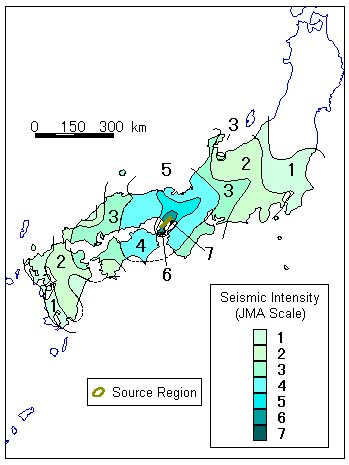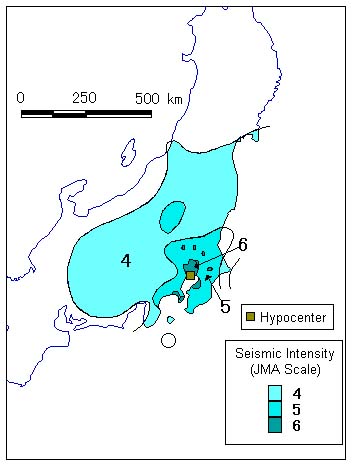 Source: Japan Times
Source: Japan TimesQuake assessment projects nearly 10,000 dead in Tokyo
Latest projection takes into account lessons from the March 11 disaster
A massive quake beneath northern Tokyo Bay would kill about 9,700 people, the Tokyo Metropolitan Government said Wednesday.
In its latest damage projection report, the metropolitan government said approximately 70 percent of the area covered by Tokyo's 23 wards would suffer a destructive temblor of upper 6 or stronger on the Japanese seismic intensity scale.
This is worse than the previous estimate of six years ago, which envisaged an earthquake of magnitude 7.3 striking the greater Tokyo area, and reflects new findings from the March 11 quake and tsunami. It also takes into account a recent study by the science ministry that a massive inland quake threatening the metropolitan areas will top the 7-level Japanese seismic intensity scale.
"Based on our estimate of possible damage, we would like to work on preventive measures," said a Tokyo official, adding that the metropolitan government plans to draft a revised disaster prevention plan for Tokyo by September.
In the latest estimates, the metropolitan government's disaster-prevention council listed four possible types of earthquake that could strike Tokyo: a magnitude 7.3 quake originating below either the northern Tokyo Bay or the Tama region in western Tokyo; a magnitude 8.2 plate-boundary quake in the northwest of Kanagawa Prefecture and a magnitude 7.4 quake on an active fault in the Tachikawa area of western Tokyo.
Six different projections based on varying wind speed and time of a day were also considered.
Of the four types, the northern Tokyo Bay quake scenario would result in the most casualties and building damage, while in the worst of the six projections, the quake would hit at 6 p.m. in winter with the wind blowing at 8 meters per second, the highest possible speed based on past data.
In the worst-case scenario, upper 6 quake would strike about 444 sq. km of eastern Tokyo, while some areas facing Tokyo Bay, including Ota and Koto wards, may experience a level 7 quake.
The 9,641 death toll is up from 6,413 in the previous estimate. About 5,600 would likely be killed by collapsing buildings and some 4,100 by fire, it said.
The number of casualties is expected to be high in areas packed with wooden houses in east and southeast Tokyo, the report said.
The metropolitan government also projected there would be some 3.39 million evacuees and some 147,600 people would be injured.
Meanwhile, the number of destroyed buildings declined to 304,300 from 471,000 in the previous estimate, owing to a decline in the number of old wooden structures and reinforcement work done on many buildings, it said.
For the first time the metropolitan government estimated the height of tsunami for a magnitude 8.2 "Genroku"-type earthquake that hit Tokyo in 1703, a so-called plate-boundary earthquake like the temblor that struck on March 11, 2011.
In the report, tsunami of up to 2.61 meters would flood an area of 4.6 sq. km to a depth of 50 cm, but no one would likely be killed.
The metropolitan government estimated intensity scales and damage for every 50 sq. meters within the 23 wards and municipalities and every 250 sq. meters for the remaining areas, which is more detailed than the previous report, the official said.
The latest study by the metropolitan government was conducted in light of the March 11 quake and tsunami that took the lives of more than 15,000 people.




